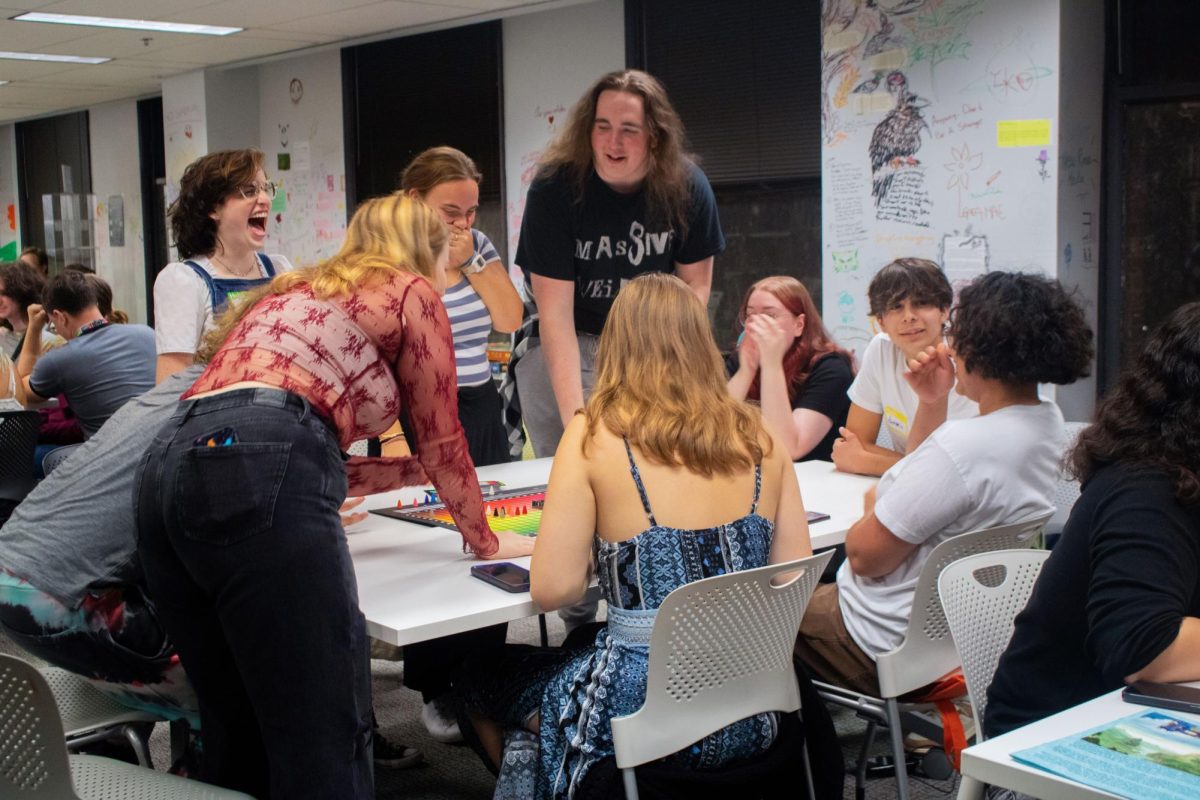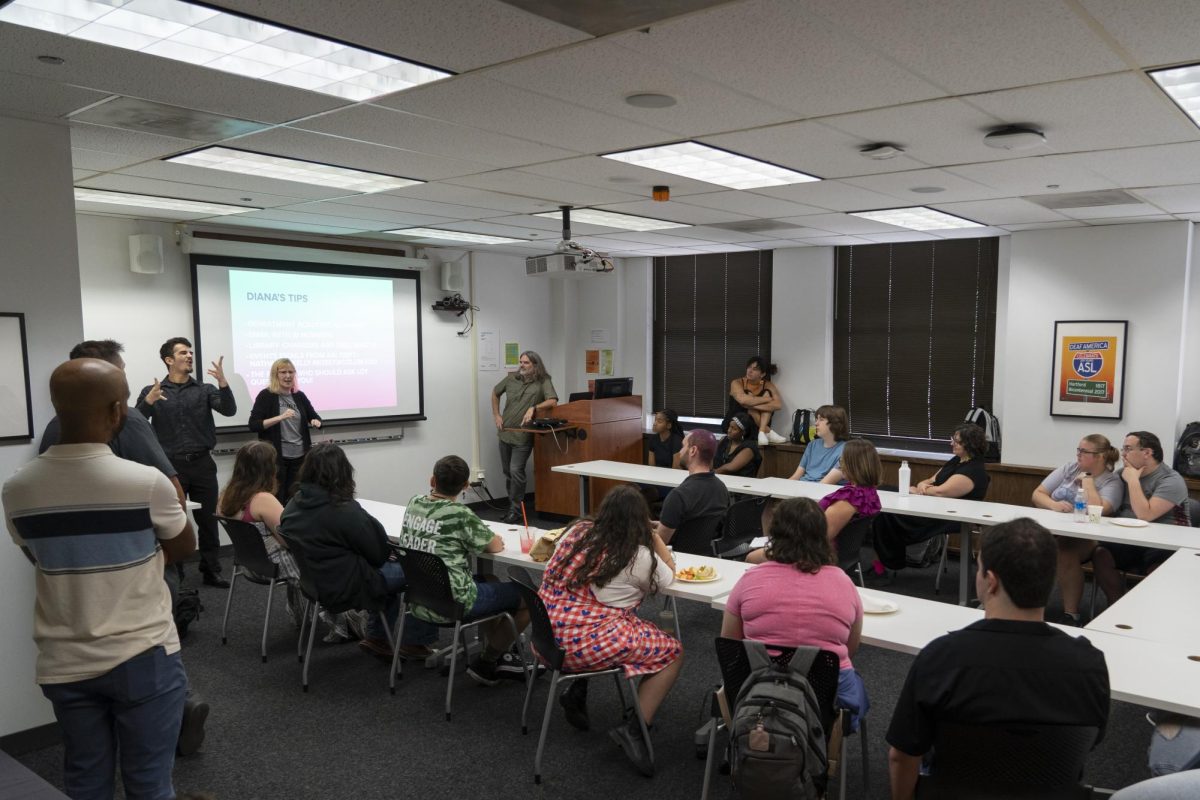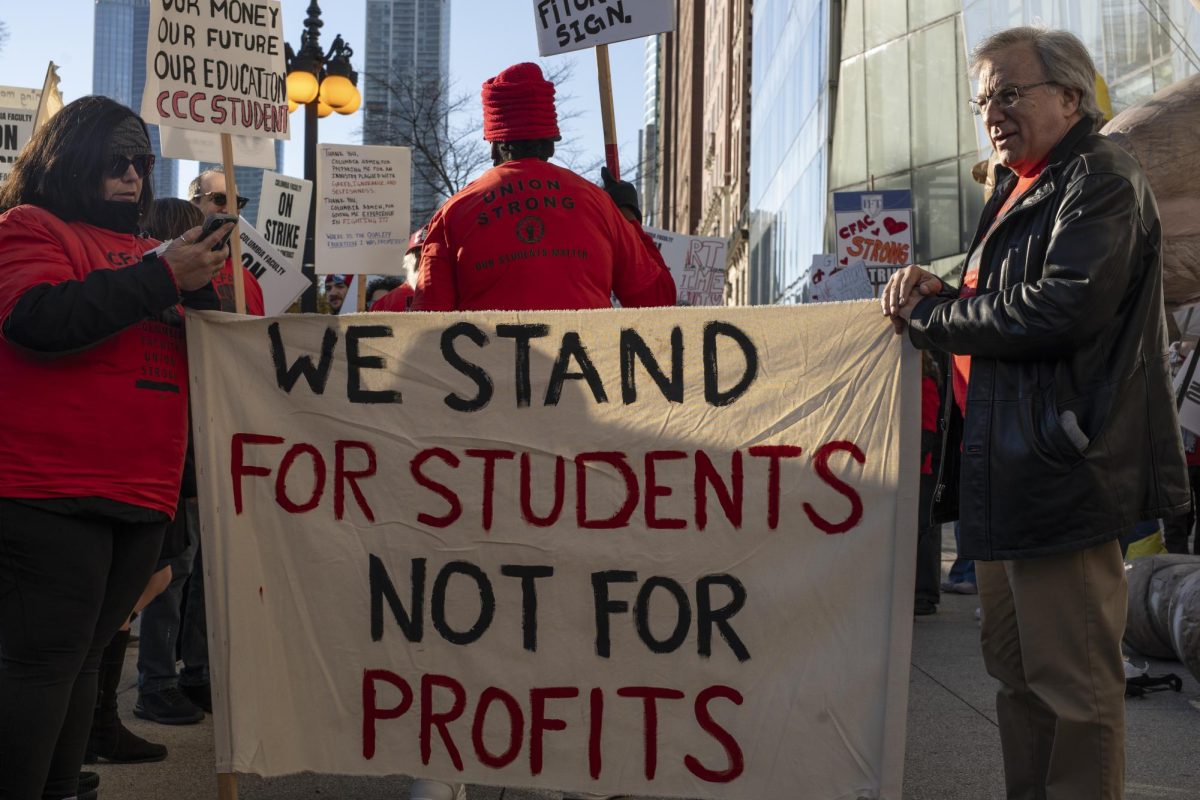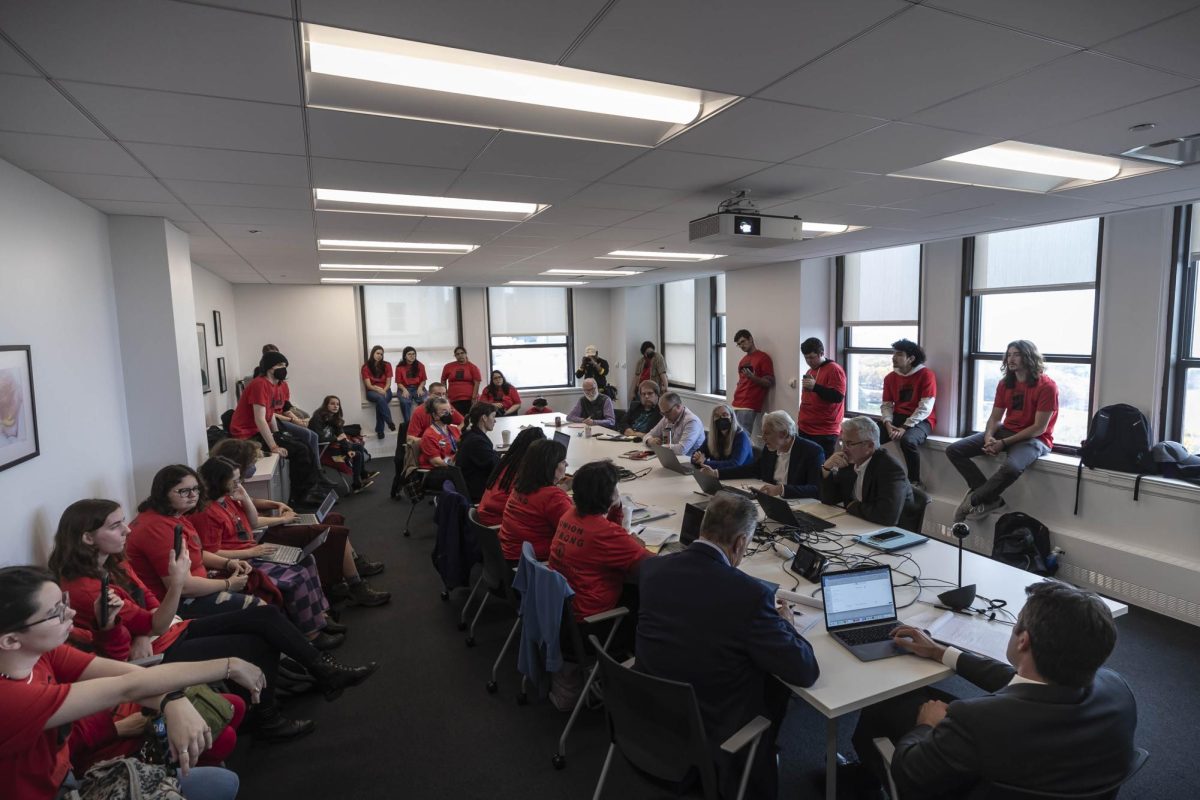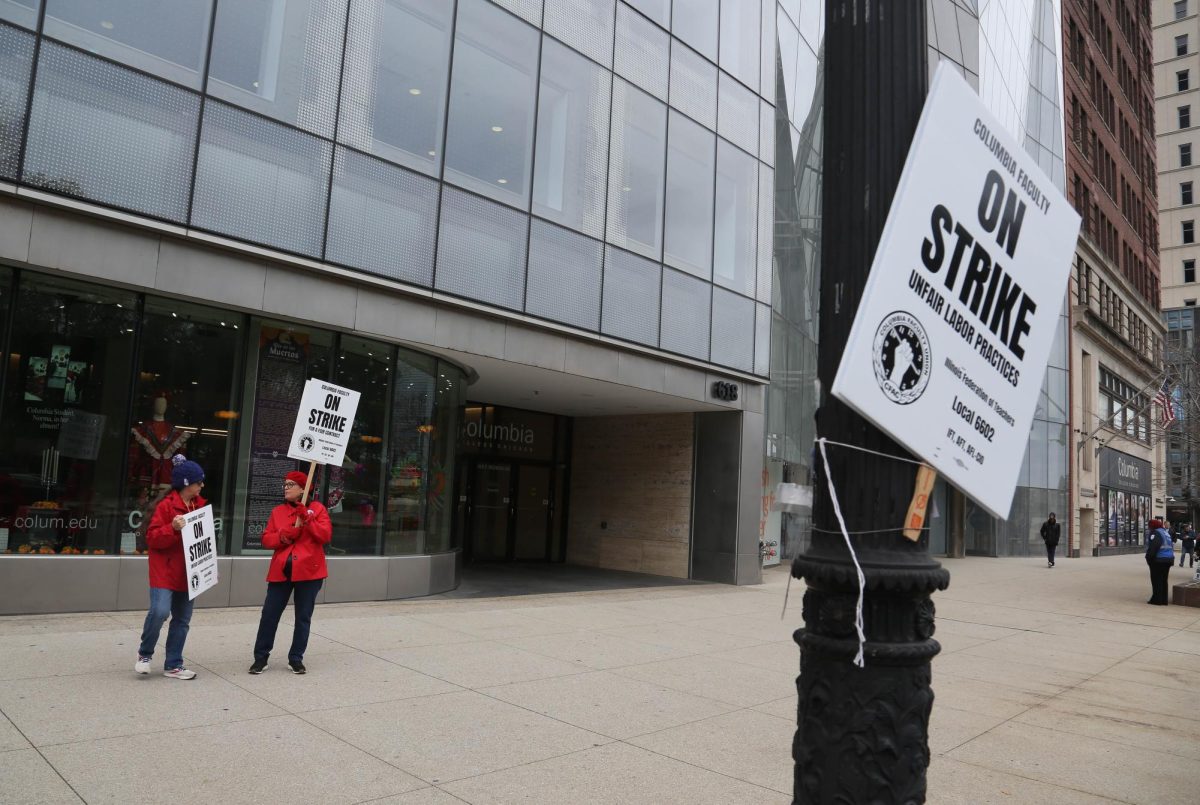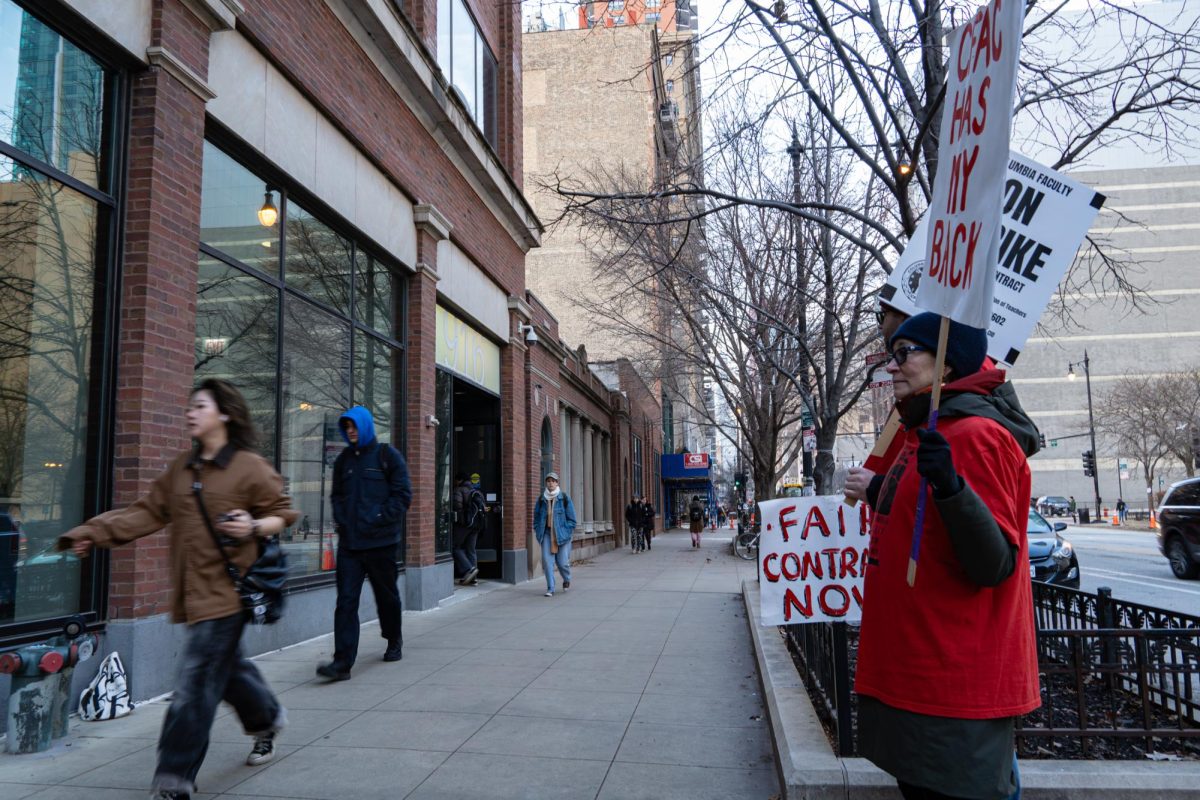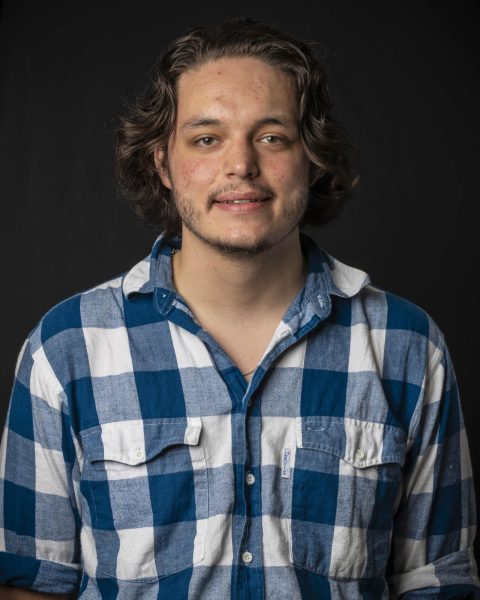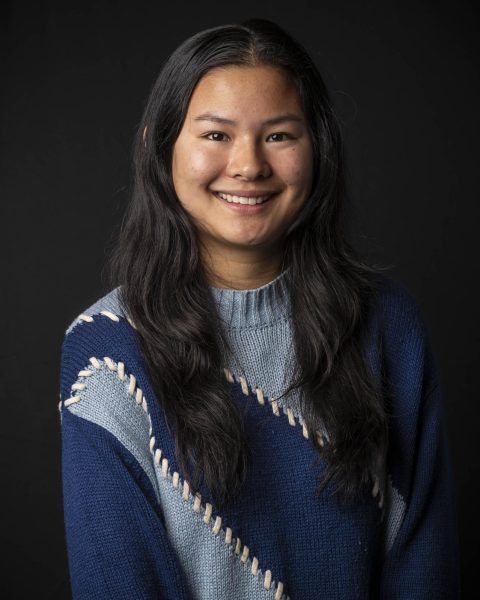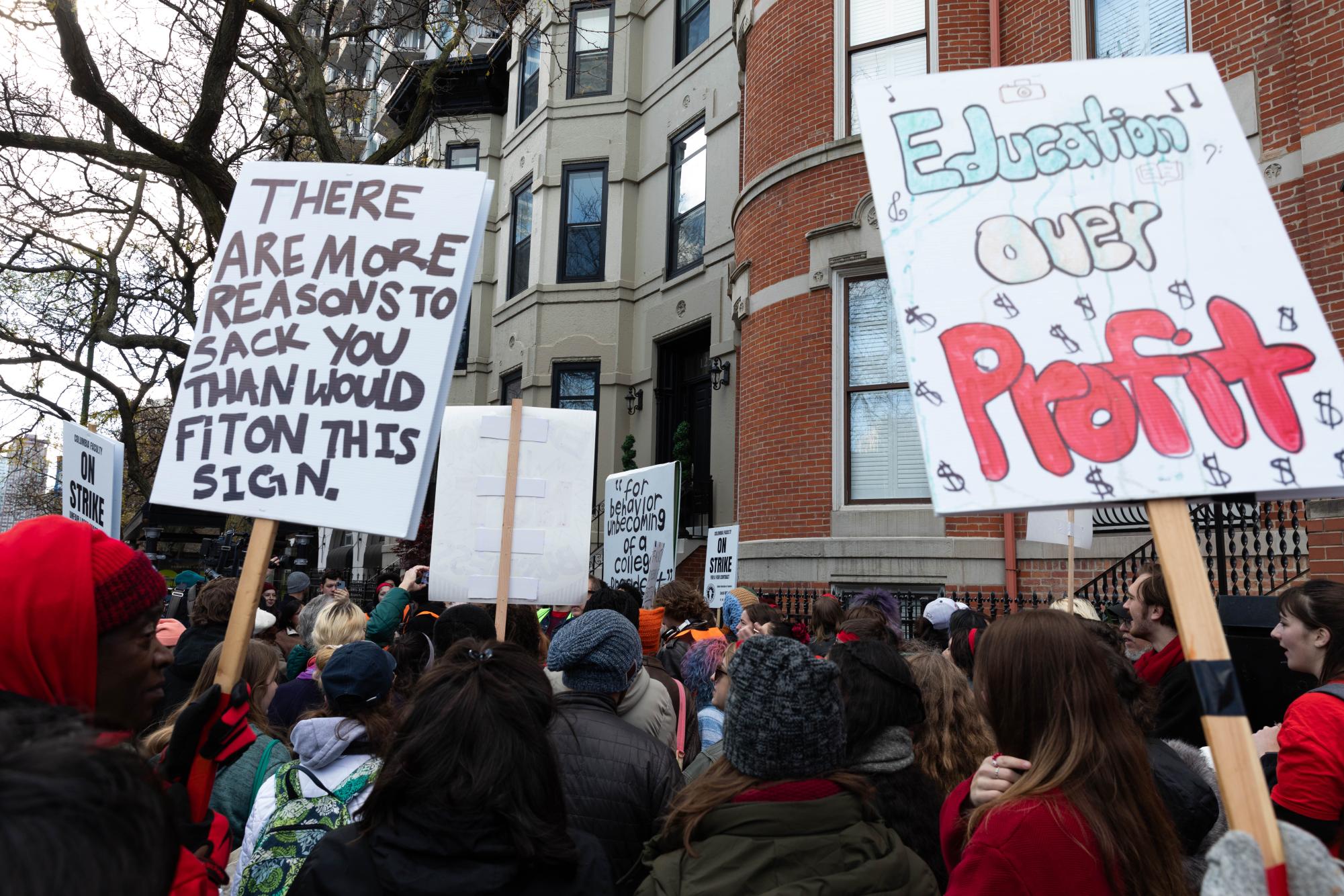
Dozens of students and part-time faculty walked about three miles from the 600 S. Ave. building to the Gold Coast residence of President and CEO Kwang-Wu Kim on Friday morning, Nov. 10 to protest cost-cutting measures the college is making to address a budget deficit.
As they walked north through the Loop to the neighborhood where Kim lives, the group chanted “Hey, Hey, Ho, Ho, Dr. Kim has got to go.” Some carried signs of the Columbia Faculty union and others were scrawled with slogans like, “Dr. Kim? More like Dr. Skim off the top!”
It took about an hour and a half for the group to make the walk. Chicago police officers followed on bicycles, assisting the walkers in making it through the crosswalks. About five uniformed officers were also at Kim’s residence.
Sophomore film and television major, Rachel Wilson, has been supporting the union since the strike started on Oct. 30. Two of her classes taught by part-time instructors were called off because of the strike. She has worn her red union shirt to her only remaining class.
Wilson said the protest shows resilience.
“This big demonstration shows that we just keep going strong, I think it really drives home how serious we are.”
Wilson said the administration hasn’t been transparent about how they are addressing a $20 million deficit. Wilson said emails sent out by the administration have been too vague, with the college outlining the issues broadly rather than making them “itemized.”
To address the deficit, the college has said it is considering cutting graduate programs with low enrollment, discontinuing certain undergraduate degrees, raising some class sizes, reducing the core curriculums credits from 42 to 30, selling some campus buildings and cutting back on use of part-time faculty.
The march was organized by students with the support of the part-time faculty union, also known as CFAC.
Students were marching because they want the part-time faculty back in the classroom and access to equipment that Columbia advertises, said Gino Angelini, a junior film and television major and one of the march leaders.
He also said students want more mental health resources.
He wants the administration “ to make resources a lot easier for us, especially when it comes to financial needs or mental needs,” Angelini said.
Michael Hays, a part-time illustration instructor, is concerned about bigger class sizes.
“When I first taught here, the courses that remain are much bigger than they used to be,” Hays said. “Suddenly, instead of teaching 18 students in my class, I’m going to be teaching 24 next semester”
Hays criticized Kim for being out of touch with students.
“He’s a concert pianist, and he comes across as tone-deaf,” Hays said. “He’s not picking up on what the students are experiencing and in his own world.”
In a video addressed to students after the march concluded, Kim addressed three issues he labeled as “misconceptions.”
The first issue was about course offerings. Kim said the college is committed to offering required courses every semester and to check the spring 2024 schedule.
“It is not as different as some suggested it might be,” Kim said in the video.
Kim added that more students will be taught by full-time faculty, and it is the college’s priority to provide students with access to faculty members that are active in their industry. Lastly, he addressed the college’s finances, The college is experiencing some financial challenges. But the college is “financially sound,” Kim said.
As a result of the now two-week-old strike, hundreds of classes have been canceled each day, although not all part-time instructors are honoring the strike. Full-time faculty also have continued to teach.
The college has 584 part-time instructors and 221 full-time faculty.
“Most of my classes, except for two, have just been canceled because part-time faculty makes up the majority here,” said Aries Hornbuckle, a first-year film and television major. “One of my full-time teachers in support of the strike has moved to Zoom, so I really only have one class in-person.”
During the march, some students and part-time faculty set up a DJ booth, microphones and speakers on the sidewalk, along with a blow-up cat on the median in the street near Kim’s residence.
Elijah Ruiz, a junior marketing major, was the DJ for the demonstration. “I’m just really here to keep the heartbeat going,” he said.
Ruiz said one of the first things he noticed when arriving at Kim’s house were closed blinds on all of Kim’s windows. He described the house as being “on a lockdown.”
After the marchers arrived, they were guided by faculty who were already there to line up on the sidewalk in front of Kim’s residence. Guest speakers at the event included members of the Illinois Confederate of Teachers, the president of the Service Employees International Union Healthcare union and the president of SAG-AFTRA.
The day before, Chicago Mayor Brandon Johnson issued a statement in support of the union. “Merging classes and eliminating courses do not serve the best interest of students or faculty,” the statement read. “Adjunct professors work tirelessly to make sure higher education students receive the education they deserve.”
First-year cinematography major Juniper Sasha was one of the four students designated to speak in front of Kim’s residence.
Sasha said she decided to come to Columbia after taking a gap year.
“I decided on Columbia because it’s a college that says it’s all about activism, it’s all about community, it’s about people who have been beat down by so many systems of oppressions to come together and make beautiful things and beautiful arts,” Sasha said, during her speech.
Daniel Montgomery, president of the Illinois Federation of Teachers, said Kim and the Board of Trustees should prioritize students.
“Without students, there’s no faculty. Without faculty, there’s no way to teach the students,” he said. “The leadership of this college, the board and President Kim, they have one job: the job is to run the institution in the interests of the students. That’s why this college exists.”
Once the speeches came to an end, students and faculty began the second part of the demonstration, an “art build.” Students decorated the sidewalks and the side of Kim’s house in sidewalk chalk with phrases like “Why Can The School Pay For This Mansion But Not For My Classes!?” and “Not At Columbia.”
“The only thing that justifies Columbia’s outrageous tuition prices is the faculty. Give them what they deserve,” Hornbuckle said.
By nighttime, when the Chronicle returned to the residence, the artwork had been removed.




